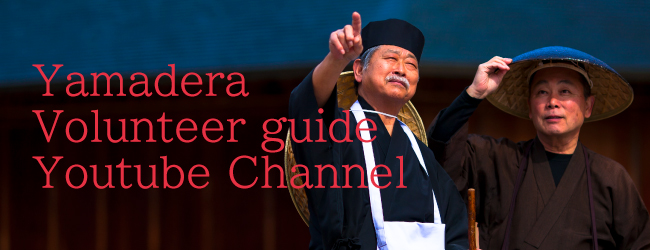Matsuo Basho
Matsuo Basho was a haiku poet of the early Edo period, and he is credited for elevating the haiku from a recreational form of wordplay to the status of literature as the world’s shortest poetic form.
Basho was born in 1644 in the town of Ueno in Iga Province (present-day Iga city, Mie prefecture) as the second son of the Matsuo family. In his early teens, Basho entered service in the household of the Todo family, which governed the area. The Todo family heir, Yoshitada, who also used the pen name Sengin, had a taste for haiku poetry, and Basho is said to have begun his study of haiku poetry under Sengin. After Sengin’s early death, Basho left the service of the Todo family and moved to Kyoto to begin his training as a haiku poet under Kitamura Kigin, a scholar of Japanese classics and a celebrated waka and haiku poet of the day.
Around the age of 30, Basho went to live in Edo (Tokyo), where he became a teacher of haiku poetry. At the time, he used the pen name Tosei, or “green peach.” With this name, Basho was paying homage to Li Bai, an acclaimed Chinese poet of the 8th century who he greatly admired. “Green peach” is thought to be a playful twist on the name Li Bai, which can be translated as “white plum flower.”
In the winter of 1680, Basho moved to Fukagawa, located across the Sumida River from Edo. A basho tree (a non-fruiting variety of banana tree) planted by his disciples grew vigorously in his garden, and his cottage came to be called the Basho-an, or the “Basho Tree Hut.” From this, he officially adopted the pen name “Basho-an Tosei,” but increasingly began to go under the more simple “Basho.” At the time, Basho was an admirer of the classic “hermit literature” of China and Japan, and his tendency to also consider himself a “hermit” is reflected in many of the poems he wrote.
Beginning in 1684, Basho set off on a series of major journeys, and Nozarashi Kiko (Journey of a Weather-Beaten Skeleton) was the first of a number of narratives he wrote describing his travels. In doing so, he was emulating Chinese poets such as Li Bai and Di Fu, as well as the 12th-century Japanese poet Saigyo and the 15th-century Japanese poet Sogi, whose extensive travels exerted a major influence upon their literature.
In the third lunar month of 1689, Basho set off on a journey to the Tohoku and Hokuriku regions accompanied by his disciple Kawai Sora. Basho was 46 years of age at the time*, and the year marked the 500th anniversary of the death of the late Heian-era poet Saigyo. During his lifetime, Saigyo traveled twice to the Tohoku region, and through this journey, Basho was following in the footsteps of Saigyo and his contemporaries, including Minamoto no Yoshitsune and other generals of the Genji (Minamoto) and Heike (Taira) clans.
After travelling approximately 2400 km throughout the Tohoku and Hokuriku regions over a period of some five months, Basho and Sora ended their journey in the town of Ogaki in Mino Province (present-day Ogaki city, Gifu prefecture), where Basho had many close friends. Five years later, Basho completed his celebrated Oku no Hosomichi travel narrative, a work based upon his experiences during this journey.
Basho spent 41 of the approximately 150 days of this journey within Yamagata prefecture, which was then a part of the Dewa Province. During this time, he visited Risshakuji Temple in Yamadera, where he wrote the famous “cicada haiku” recorded in his travel narrative: shizukasa ya / iwa ni shimiiru / semi no koe (such stillness – / the cries of the cicadas / sink into the rocks [translation: Donald Keene]).
In 1694, at the age of 51, Basho fell ill and died while visiting Osaka. In accordance with his last wishes, his body was taken to Gichuji Temple, near the banks of Lake Biwa in the region of Zeze, where he was buried next to the famed general Kiso no Yoshinaka, a tragic hero of the 12th century. The final haiku poem written by Basho was as follows: tabi ni yande / yume wa kareno wo / kake meguru (on a journey, ailing – / my dreams roam about / on a withered moor [translation: Makoto Ueno]).
Matsuo Basho established the shofu (“Basho style”) of haiku poetry, a style known for its artistic sophistication. He is widely recognized as one of Japan’s finest poets, and his Oku no Hosomichi travel narrative and famous haiku poem furuike ya / kawazu tobikomu / mizu no oto (the old pond – / a frog jumps in, / water’s sound [translation: Makoto Ueno]) are works known to virtually all Japanese people.
*In the pre-modern era, Japan used the kazoedoshi system of age reckoning in which people are considered to be one year of age when they are born, and a year is added to their age on the following New Year’s Day. Here, Matsuo Basho’s age is given according to the traditional age reckoning system. It should also be noted that the concept of “zero” did not originally exist in East Asia.
